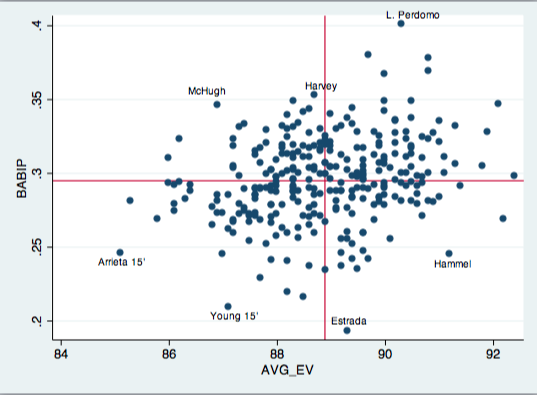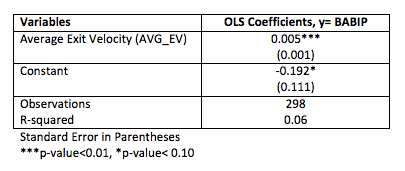My Ongoing Conversation In My Head About Aroldis Chapman
What ails you now, brain?
Well, I still feel icky watching the Cubs after their trade for Aroldis Chapman.
Even after watching the last few games? Chapman’s been basically as good as advertised.
Actually even more so. Looking at pictures of the team celebrating with Chapman bother me and I wonder about whether the Cubs have mortgaged their souls. There’s one of my favorite young players Addison Russell, high-fiving unrepentant “I’m only sorry because of the gun” wife-choker Aroldis Chapman.
Look, you have to look at this from a baseball perspective. This is a borderline defensible deal. On the one hand, the Cubs gave up a LOT for Chapman, but they also had less relative value of those pieces. The Cubs want to win now, and the Yankees can afford to stock up on pieces to win later. The price of high-leverage lights-out relievers is high. I might think the deal looks imbalanced, but the Cubs stockpiled prospects for this very reason.
OK, but you can’t talk about this in terms of “a baseball perspective”! Clearly the reasons this deal makes you queasy have nothing to do with just baseball. Also in terms of BASEBALL reasons, doesn’t this feel like you’re defending Billy Beane’s terrible Donaldson trade? Or the Astros’ terrible Ken Giles trade?
OK, but when it’s the bottom of the 9th in the playoffs with two men on, are you going to want Aroldis Chapman’s 105-mph fastball against your team or for your team? This is more like the Michael Bourn-Brad Lidge deal. Giving up a lot in the future for one additional piece right now.
Yeah but that also means that when the Cubs go cheering in celebration at that big win, they will be running into the arms of a man who probably choked his girlfriend and then fired a gun multiple times into his garage. Are you OK with that?
Well, you still listen to James Brown, don’t you? You still love “Ignition (Remix)” (surely far more stomach-churning in context). You still watch Woody Allen movies. You still enjoy Degas’ paintings. Can’t you separate the act from the person? Look at that helpless swing from Jose Abreu in the face of a 91-mph slider following a 105-mph fastball and tell me it’s not art!

Yes, but that doesn’t mean that you need to make choices to pursue people who have done awful things. It’s one thing if the world accrues some sort of benefit from this work. Here, only the Cubs do! I can appreciate his fastball on the Yankees, thanks. And on top of that, Aroldis Chapman’s fastball is extraordinary but he’s not somehow irreplaceable. Hector Rondon has been as good this season.
OK, but last time I checked, Mr. “I Think Criminal Defendants Shouldn’t Have Stigma Forever,” you think we should let people who have served their time reenter society, find employment, vote, and be citizens without having the stigma of “ALLEGEDLY” in front of their names for the rest of their lives. We don’t know what happened that night. Chapman was not indicted, and he served a suspension in his job. Why can’t he just be another player now? Why must his collateral consequences last forever?
Well, obviously some categories of crimes we deem worse than others, and you proclaim that crimes that reinforce the patriarchy and misogyny are worse crimes. And do we really think Chapman’s changed? His general comments on the incident are not those of a repentant person and are pretty much a non-apology apology.
OK, but Matt Bush drunkenly ran over a guy’s head with a motorcycle and he plays baseball. Jose Reyes is out there playing baseball. And if what you care about is misogyny, I’m sure that MLB is full of misogynist guys if you ask. Everyone loved Kirby Puckett! Bobby Cox was a lovable grump! And those guys all hit their wives.
That’s hardly a defense. This gets back to what I said earlier: do we need to affirmatively seek out guys with that history? And on top of that, the Cubs paid a lot for the guy! Way more than the Yankees traded back in the offseason. It implies that the Cubs do not care about his past at all. Does this mean that hitting your girlfriend depresses your employability right after it happens, but not eight months after it happens?
Yes basically! Time and penalties separate us from our past indiscretions as a society. It’s not that time somehow heals the wound, but it’s a return to normalcy.
But I don’t want players who commit domestic violence to be normalcy!
Yeah, but when it comes to a collision of your conscience and baseball, why does your conscience only worry about this aspect of Chapman? Do you expect all businesses to have these high-minded ideals? If you do, where are people who do something you think is terrible supposed to do? Go work in the landfills and live under a bridge? If anything, the economics make it easier to let prior bad acts become history. Jhonny Peralta went from PED user to good SS for the Cardinals. Baseball execs are analytical thinkers in a zero-sum world. Your gain is someone else’s loss. SOMEONE will be employing Aroldis Chapman; your moral stance does not change that.
But the Cubs were supposed to be different! They’re my team! A lovable fun team of goofballs who wear fun costumes and play fun-loving pranks on each other and definitely don’t beat their wives.
OK, one, that’s wrong. Remember Starlin Castro? You think those sexual assault allegations just went away? And he was such a lovable scamp! Sammy Sosa had accusations of spousal abuse. Mark Grace has many a DUI to his name. And second, the Cubs are not heroes. They are, as you often say, millionaire jocks in their early 20s playing a child’s game for your entertainment. Do you expect them to reflect your values?
I guess we all have to accept that our heroes are mercenaries wearing cute outfits and our beloved sports teams are just billion dollar businesses.
There, now sit back and enjoy the baseball.
BUT THAT’S EXACTLY THE THING. Baseball is supposed to be an escape. It’s pure and beautiful and keeps us from thinking about our impending deaths. I want to enjoy it guiltlessly. Why can’t it also have a conscience?
Because baseball is not apart from the world; indeed it almost always reflects the world around it. Baseball is messy and full of flawed humans and you need to accept that.
Why must we accept all those flaws, though? That’s where I think you’re wrong! We celebrate Roberto Clemente and Hank Aaron and players with hearts. We celebrate Branch Rickey for selecting Jackie Robinson because we think his conscience was right.
But he only did it because it “made good baseball sense.” Which this deal makes too. Baseball is inherently immoral. We recognize Clemente, but Kennesaw Mountain Landis and Pete Rose and Ty Cobb are all celebrated too.
OK, but your answer cannot be “not as bad as Ty Cobb” every time.
Fine but modern baseball is not much better. Should I list the terrible working conditions for minor league players? Should I get into these baseball “academies” in poor countries? Terrible stadium deals that rob the public?
Agh! I guess I’ll just feel a little gross about my Cubs this year and a little queasy about any potential playoff glory being tainted by the 50% chance that Aroldis Chapman will be the focus of the big celebration, but only slightly less gross than I should feel about baseball itself?
Yeah that’s about right.
At least I can feel good about hot dogs and apple pie right?








